ESTUDIO TEÓRICO EXPERIMENTAL Y NUMÉRICO DEL COMPORTAMIENTO DE FALLA DE HORMIGONES REFORZADOS CON FIBRAS (PIUNT CX-E636)
THEORETICAL, EXPERIMENTAL AND NUMERICAL RESEARCH OF THE FAILURE BEHAVIOR OF FIBER REINFORCED CONCRETE
Director: Dr. Ing. Sfer, Domingo
Co-Director: Ing. Sergio E. Gutierrez
Periodo de Ejecución: Inicio 01/01/2018 – Finalización 31/12/2022
Resumen:
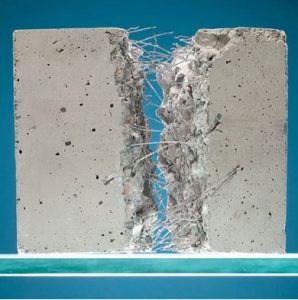 |
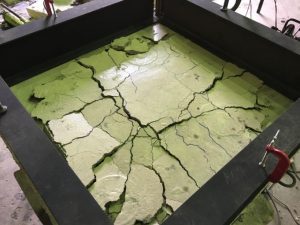 |
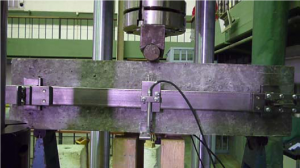 |
En la actualidad el hormigón reforzado con fibras (HRF) constituye un compuesto de gran difusión, en particular ha logrado un gran desarrollo en nuevas técnicas constructivas que se aplican en diversos países.
A través del uso de las fibras se logra un incremento sensible de la ductilidad en el hormigón. Por otro lado, la incorporación de fibras disminuye y redistribuye la formación de fisuras de tracción en el hormigón introduciendo así una sustancial mejora en su durabilidad.
Desde el punto de vista estructural las fibras complementan el trabajo de las armaduras en elementos de hormigón armado, adquiriéndose un mejor comportamiento frente a solicitaciones de tracción y flexión. Es indudable que frente a acciones dinámicas la adición de fibras cumple uno de sus mejores aportes, pues preserva integridad y evita la concentración de fisuras.
Estas propiedades francas enunciadas han permitido probar la efectividad del HRF en el refuerzo de elementos estructurales encamisados, abriendo camino a un sinnúmero de posibilidades de refuerzo en estructuras.
La exposición de las estructuras de hormigón al medio ambiente, al paso del tiempo y a eventuales cargas o incrementos de cargas, como por ejemplo cargas dinámicas, sísmicas o cambios de destino, producen un deterioro tal en el material que necesitan ser reparadas y/o reacondicionadas para conservar su capacidad de servicio.
Una alternativa válida para resolver estos problemas planteados resulta ser el HRF. Su utilización permite reemplazar el uso de costosos compuestos con fibras de carbono y epoxi. Como ventaja del HRF se puede mencionar que el material base es el hormigón, el cual es un material muy difundido, fácil de elaborar, no requiere de herramientas especiales para su colocación y los trabajos pueden hacerse rápida y fácilmente, con la particularidad de presentar un costo razonablemente menor que otros materiales alternativos. El desarrollo de nuevas técnicas de reparación es un tema de gran actualidad en Ingeniería Civil.
Continuando la línea iniciada por el Proyecto de Investigación ESTUDIO EXPERIMENTAL Y NUMERICO DE LA REPARACION ESTRUCTURAL CON HORMIGON REFORZADO CON FIBRAS, Código 26/E545/4, financiado por el CIUNT (2014-2017) este proyecto tiene por objetivo general estudiar la reparación y refuerzo de elementos estructurales lineales como viga y columnas, y planos como pavimentos y losas con HRF.
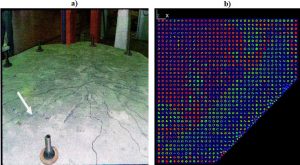 |
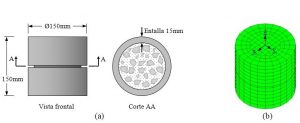 |
Abstract:
Currently fiber reinforced concrete (FRC) is a widely used composite; in particular it has achieved a great development in new constructive techniques that are applied in several countries.
Through the use of the fibers a sensible increase of the concrete ductility is achieved. The incorporation of fibers decreases and disperse the tensile cracks in concrete which introduces a substantial improvement in its durability. From the structural point of view the fibers complement the work of the reinforcements in elements of reinforced concrete, obtaining a better behavior on tension and bending demands. In front of dynamic actions the addition of fibers fulfills the requirements of integrity and avoids the crack concentrations.
These properties prove the efficiency of FRC in reinforcement of structural sleeve elements which gives many possibilities of reinforcement in damaged structures.
The environment conditions, age and eventual incremental loads like dynamic and seismic ones produce natural damage in concrete structures that leads to repairing or rehabilitation in order to mantain their serviciability.
An alternative to solve these problems is the fiber reinforced concrete (FRC) which replaces the use of expensive composites with carbon fibers and epoxi. It can be mentioned as an advantage of FRC that the base material is the same concrete which is a commonly used material, easy to prepare, no special tools are needed and it can be used quickly and easily with a reasonably lower cost than other alternative materials.
This Project is the continuity of a previous one “ESTUDIO EXPERIMENTAL Y NUMERICO DE LA REPARACION ESTRUCTURAL CON HORMIGON REFORZADO CON FIBRAS”, 26/E545/4 supported by CIUNT (2014-2017). The principal objective of this Project is to study the repairing and reinforcement of structural linear elements like beams and columns and plain elements like pavements and slabs with FRC
GRUPO DE INVESTIGACIÓN |
|||
| Apellido y Nombre | Rol | Horas | Lugar de trabajo |
| MOLINA TRIVIÑO,ANALÍA DE LOS ÁNGELES | Investigador | 20 | UNT-FACET |
| ZERBINO, RAÚL | Investigador | 5 | UNLP-Fac. de Ingeniería |
| FIENGO PÉREZ, FABIÁN | Becario-Tesista | 40 | UNT-FACET |
| FARFÁN DURÁN, EDUARDO DANIEL | Becario-Tesista | 40 | UNT-FACET |
| AUAD, ALEJANDRO | Tesista | 40 | UNT-FACET |